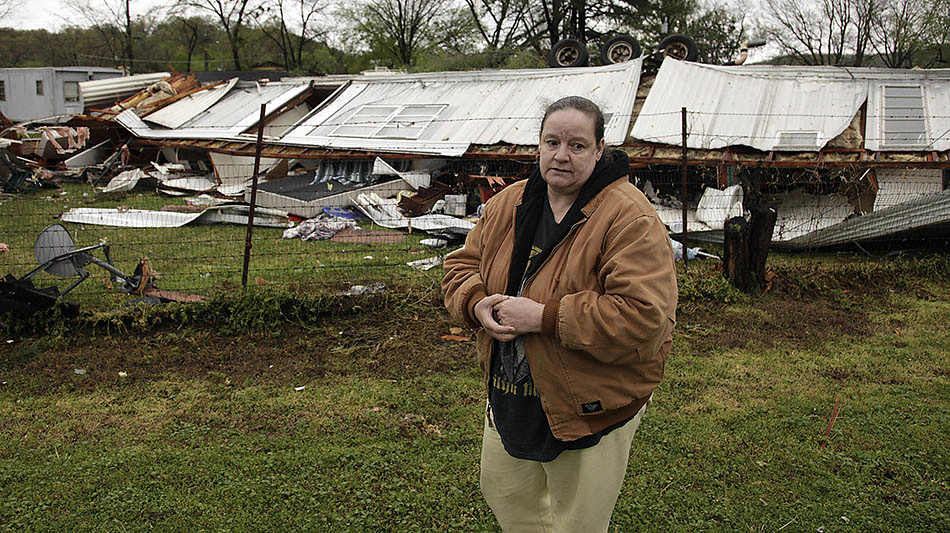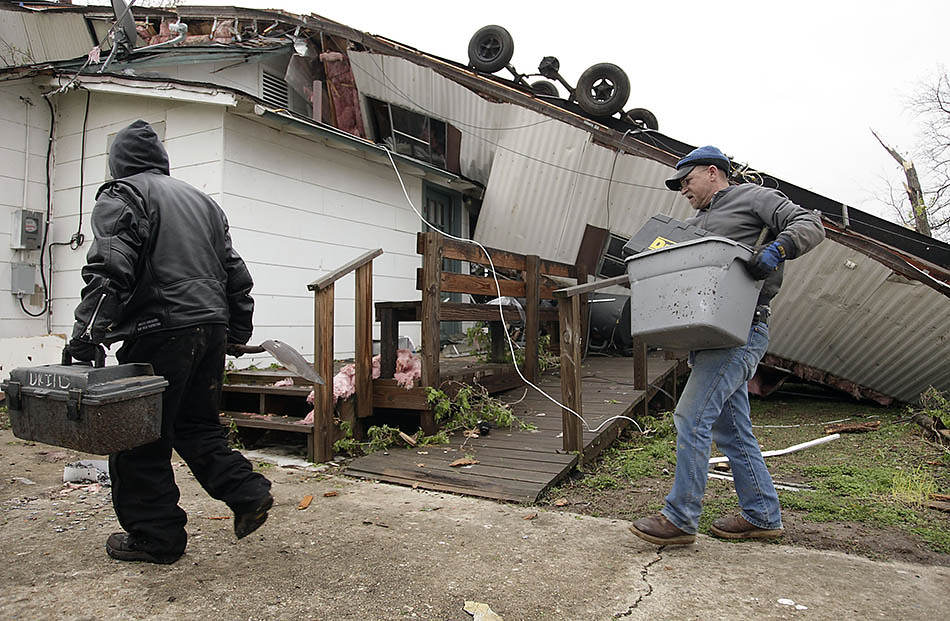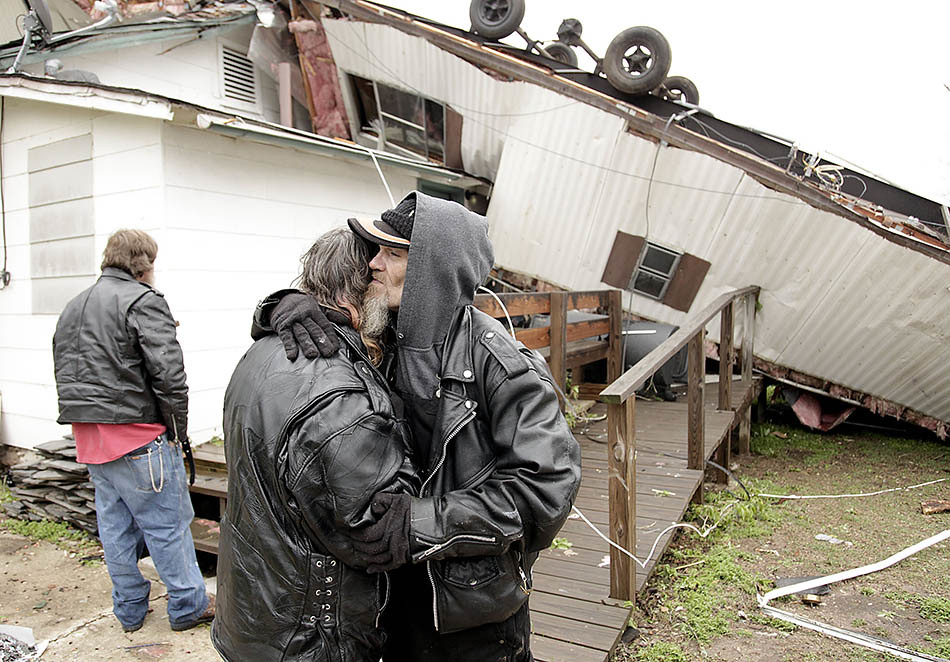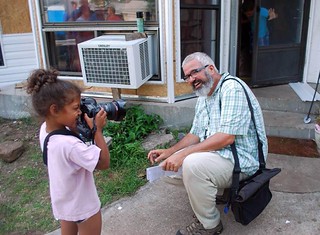Spotlight on Mike Simons
Oct 20, 2017

TID:
This is a somber moment, Mike. Can you tell us some of the backstory?
MIKE:
I work the 8-4 shift at the Tulsa World. This tornado hit after 1 a.m. So, I woke up to a text on my phone telling me that my day would be spent in Spavinaw, Ok, covering the storm. It is about an hour and fifteen minutes away from Tulsa, and I was able to get there at sunrise. I was shooting utility crews working. I turned around and across the street a man and his wife were standing in their yard. I thought they’d be a good voice for the video, so I asked if it would be alright if I could talk to them. I never use the word interview. It scares people.
He obliged, and then I noticed the kids in the car. They wanted to see the damage and watch all the work taking place. It was a safe place that the parents could put them. The car had the window blown out and their house in the background did, too.
TID:
Covering events like this present a host of challenges, with a need to show great respect. Can you talk about what it was like upon arrival and how you initially began?

MIKE:
When I first arrived, people were still waking up, and walking around in shock. They were seeing the damage (in light) for the first time just like me. The paper needed a photo for the web site as quick as possible so I shot quick and sent. Then I slowed down and concentrated on video and better photos.
TID:
I’m always intrigued by photographer’s use of body language and verbal language. Can you talk about your approach here with this in mind?
MIKE:
During events like this, I almost never shoot anyone’s photo without talking to them first. Sometimes I will see something that I can’t pass up and shoot first, but that’s rare. A lot of times, just during a conversation I will raise my camera slowly and if they don’t object then I get to work. Sometimes, they will say no pictures please. I usually ask, “Why not?” Almost always they respond, “I look just terrible.” I usually explain to them that no one would hold that against them, as their house has been destroyed. I also explain that I won’t shoot a close-up. It usually makes them feel better, but if they still object, then I just listen. I had a mentor named Darrell Barton.
He was an incredible TV photojournalist. He would always say, “When things get crazy; slow down.” I am constantly saying that in my head at spot news events like this. “Slow down, Mike,” because the tendency when covering spot news is to rush. I think you make better photos when you work slow, and I also think people you’re photographing respond better to that.

TID:
I think photography is so much about problem solving - can you talk about what problems you faced, and how you worked to overcome them?
MIKE:
A lot of times we have forecasts that call for high probability of tornadoes, and we are prepared in the newsroom with plans and staffing. Tornadoes almost never hit when we’re the most prepared. This time was no different and for the citizens of Spavinaw, the tornado sirens didn’t even go off, so there was no warning at all as the storm hit. I have a power inverter in my car and use that for my laptop, and I sent on my phone.
TID:
Where there aspects of covering the event that surprised you?
MIKE:
I didn’t really know anything about the extent of the damage while driving there. When I pulled into town I was shocked at how bad the damage was. I worried on the way there that with a town this small, it would be easy for police to close off access to the town. I was surprised they didn’t. I never really had confrontations with police or first responders the whole day, and was pretty much allowed to roam freely, aside from the occasional, “Be careful,” and “watch out for power lines,” comment.
TID:
Now, onto the moment. Can you talk about the main image, and the moments leading up to it?

MIKE:
When this family heard the tornado, the parents had seconds to grab all the kids and throw them into the closet and jump on top of them before the windows started blowing out of their home.
Once I started shooting this picture, I took a bunch. I didn’t think I wanted eye contact from any of the 6 kids. After a while, I realized I needed to move back to show the house too. I started shooting too tight. In the end, every photo had eye contact, but it turns out I liked the eye contact.
TID:
What have you learned about yourself in covering events like this?
MIKE:
When I first started out covering stuff like this I was really all about the photos. If I approached someone and they didn’t want their photo taken I would move on. Now, I still want to talk to them. Even if they won’t let me take their photo or talk to me on camera; I still want to hear their story. Many times, when they see this, they end up letting me photograph them.
TID:
What have you learned about others who are in situations like this?

MIKE:
I just can’t believe people are so open and willing to be photographed often. I wonder often if I’d be so accommodating to a photographer. I don’t think I would. I do believe that the older I get the easier my job gets. People are less willing to shout at someone and tell them no photos when they are older than them. I didn’t realize that was the case, I just thought I was getting better at the job. But, I have come to believe it is just because my hair is gray, and at 45-years-old, I am older than a lot of the people I photograph now.
TID:
In conclusion, what advice do you have for photographers who cover this type of news?
MIKE:
I feel weird giving advice. Despite having done this full time for over 20 years I still feel more like a student than a teacher. First, I absolutely love being a community journalist. I think people generally want to know you care about them. They want to know you’re not just trying to get a photo and move on. I like talking to people and learning about them. Many times, they want to show me something that they think will make a great photo. I know it won’t, but I still go and I still shoot photos of it.
It can be hard to shove a camera in someone’s face and photograph them at their lowest. But, I have seen how much help they receive after a compelling photo runs in the Tulsa World. People receive help from the work we do so keep doing it!
:::BIO:::

I am a staff photographer for the Tulsa World. I left the Tulsa World once to freelance in Cincinnati. I missed Tulsa immediately and was lucky enough to return to my staff job at the World. I am married to Brandi (brandisimons.com), a freelance photographer that is a much better shooter than me. We have 2 daughters Sonnie,14, and Sarah,12. I have decided to quit writing my bio in 3rd person because it makes me feel weird.
You can follow him here: